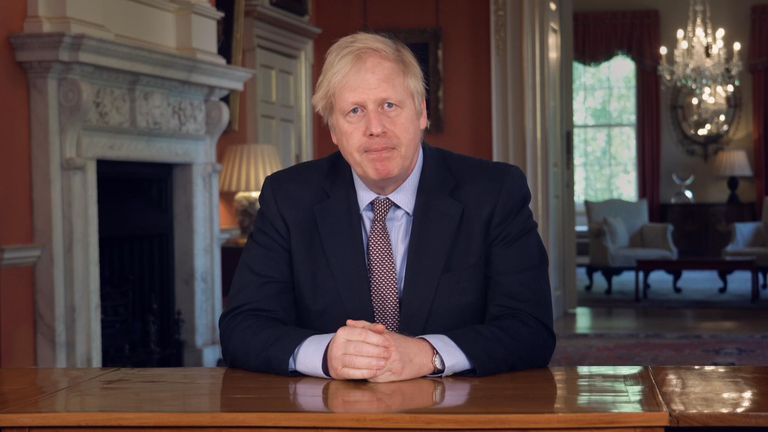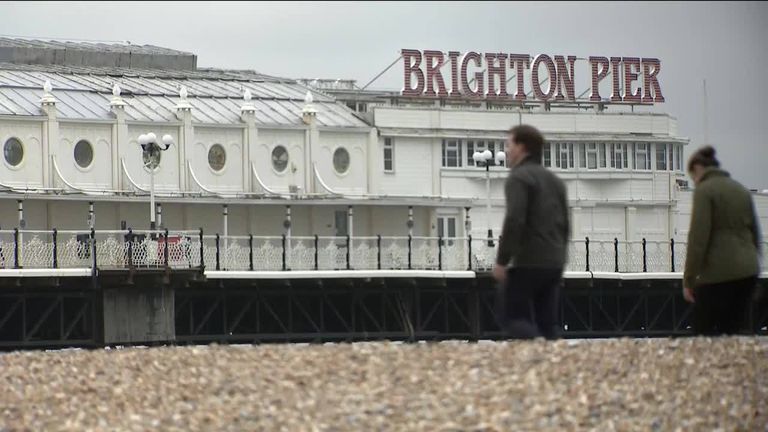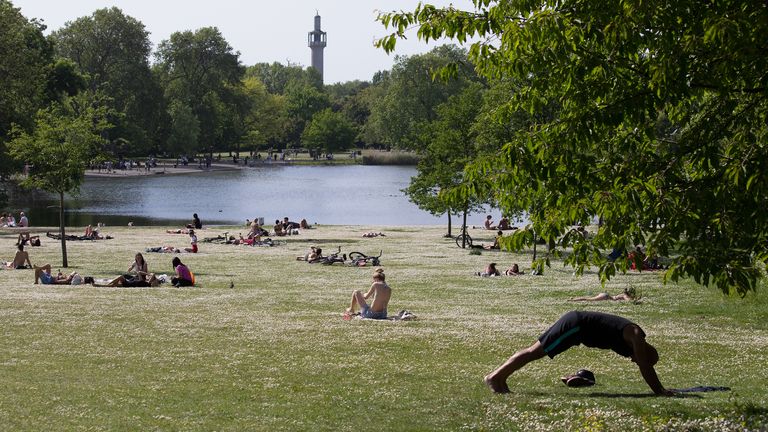We've been a long time in lockdown. We went into it together as a country and for the past few weeks the instructions have been very black and white: "Stay home, protect the NHS, and save lives."
But the next few weeks are going to be rather grey. The prime minister knows there is not one simple route out of lockdown: different groups of people, workers, regions, nations might take different paths.
The prime minister does at least have a clear guiding principle against which to sketch out this roadmap - the R rate.
Keep the reproduction rate of the disease below 1, and the rate of transmission is diminishing. This will be the benchmark by which all the decisions will be made.
He was clear on Sunday evening that any significant easing of the lockdown must wait: the R rate is still running at 0.5-0.9 and there is still an "awful epidemic" of COVID-19 in care homes.
The number of daily cases is also too high to ease the lockdown in any meaningful way.
One senior government figure told me that the number of new cases is running at about 16,000 a day, well above the 4,000 new cases a day the government would want to see before it could lift the lockdown without risking a spike in the epidemic.
Based on the current estimates, the cases should be coming down to the 4,000 mark in around three weeks, which is why the prime minister has set June as the possible starting date of phase two of easing the lockdown.
There are so many shades of grey in the government's plan because decisions ministers will take are conditional on a virus that they do not truly understand and public behaviour which they cannot fully predict.
Boris Johnson's statement marked a shift in messaging rather than actual policy.
This is a government that having ordered us into lockdown is now beginning to give us all a little bit more space to read between the lines about how we might choose to live with COVID-19.
The actual changes were pretty modest.
From Wednesday, people will be able to go out as much as they want. They will be able to exercise, go to the beach, sit in the park and sunbathe with one other person - 2 metres apart - or play golf, tennis or go for a swim in the sea.
And he has also asked those who are unable to work from home - those in construction or manufacturing - to actively try to go back to work.
In the round, these tweaks give far more scope for people to start working again and socialising again - albeit in limited ways.
Tennis teachers can start up lessons again and golf clubs can reopen. Friends can meet in the park and children can perhaps have a (socially distanced) kick about with a friend.
Different people will take different decisions based on their own appetite for risk, but as we move along this curve, different things will be asked of different groups of people too.
In June, non-essential shop workers could be back at work, while hairdressers, gym instructors and bar staff will have to wait. Some children will be back to school, starting with primary children in reception, year one and year six, while others will not.
There will be divisions across the nations and divisions across different age groups. There will perhaps be different lockdown measures put in place across towns or regions as the government tries to manage outbreaks.
All of it is conditional on the R rate and on the level of new cases.
And there are so many practical questions about lifting this lockdown. The first ministers of Scotland and Wales raised an obvious one this weekend.
Nicola Sturgeon doesn't want to change the 'stay at home' message and will certainly not be sending Scottish kids back to school from 1 June.
Senior ministers are exasperated at what they see as Ms Sturgeon's attempt to raise her profile to that of the prime minister's and re-cast Mr Johnson as the ruler of England rather than the entire Union.
:: Listen to Sophy Ridge on Sunday on Apple podcasts, Google podcasts, Spotify, Spreaker
Ms Sturgeon for her part says she's acting in the interests of the Scottish people and will not be driven by a timetable set in Westminster.
As for the wider public, there is perhaps a sense of anxiety and nervousness that different bits of the country are at odds with each other. It creates a sense of confusion and lack of clear direction and purpose.
There are also obvious concerns from the trade unions and the Labour party about the 'back to work' messaging when proper safety guidelines haven't been agreed.
Trade unions were brought into discussions only a week ago and are yet to agree new guidelines with the government.
Blue collar workers being bounced back to work with 12 hours' notice and no official guidance is, in the words of shadow business secretary Ed Miliband, "irresponsible and wrong".
And as for our personal relationships, the new guidelines suggest that we can meet one person outside our household in the park or go for a walk as long as you socially distance.
But that will of course raise obvious questions - can you meet two people, can you sit in each other's gardens, can you sit in your own house with a friend if you're two metres apart?
And what about the over-70s? The PM offered no details about their roadmap out of lockdown.
These are all the shades of grey. Going into lockdown was a very hard decision to make, but once it was done, the rules were clear.
The route out is anything but, which is perhaps why Mr Johnson's statement raised as many questions as it answered.
As we move out of lockdown, we'll probably be guided as much by our own appetite for risk as we are by a nanny state.
All of us will have to find a new normal and it is going to take some time to get there.
https://news.google.com/__i/rss/rd/articles/CBMicGh0dHBzOi8vbmV3cy5za3kuY29tL3N0b3J5L2Nvcm9uYXZpcnVzLXRoZS1nb3Zlcm5tZW50cy1yb3V0ZS1vdXQtb2YtbG9ja2Rvd24taGFzLXNvLW1hbnktc2hhZGVzLW9mLWdyZXktMTE5ODYzMDDSAXRodHRwczovL25ld3Muc2t5LmNvbS9zdG9yeS9hbXAvY29yb25hdmlydXMtdGhlLWdvdmVybm1lbnRzLXJvdXRlLW91dC1vZi1sb2NrZG93bi1oYXMtc28tbWFueS1zaGFkZXMtb2YtZ3JleS0xMTk4NjMwMA?oc=5
2020-05-11 01:21:53Z
52780773906203




Tidak ada komentar:
Posting Komentar